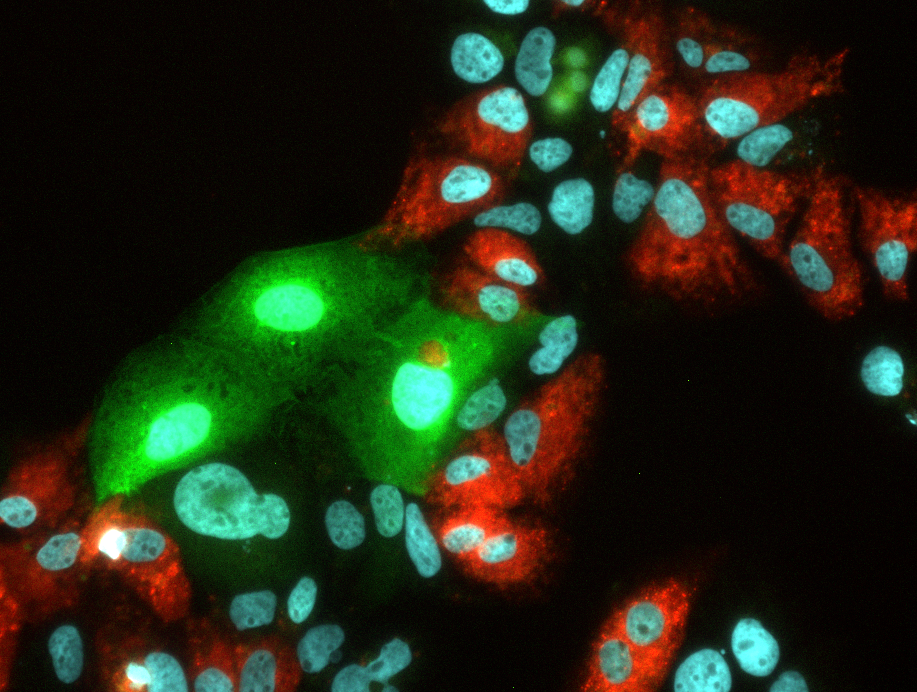The hepatitis E virus (HEV) is the leading cause of acute viral hepatitis worldwide, affecting 20 million people per year. HEV-infections are self-limited, but can progress into fulminant or chronic hepatitis E with considerable fatality rates. Although HEV cases have recently increased in industrialized countries, it is nonetheless still underdiagnosed. Hepatitis C virus (HCV) is estimated to affect more than 100 million people worldwide. Although direct acting antivirals (DAAs) have greatly improved treatment, eradication is still far from being accomplished. It is being hampered by several factors, one of which is also underdiagnosis. Due to the underdiagnosis of both viruses, there are only a few reports of co-infections despite their frequency. These case reports are only few and inconclusive with regard to implications for disease.
A recent study led by the group of Prof. Eike Steinmann from Ruhr University Bochum, Germany characterized HCV/HEV co-infections in cell culture and in a human liver chimeric mouse model. First, they examined HEV and HCV replication in the presence of one another. Using subgenomic reporter replicons in human hepatoma cells, HCV inhibited replication of HEV but not vice versa. The researchers then made cells that stably expressed an HCV subgenomic replicon. These supported virtually no HEV replication, but could be rendered re-susceptible by pretreatment with anti-HCV DAAs. Next, they sought to elucidate the mechanism of HEV suppression by HCV and expressed individual viral proteins which were delivered by lentiviral transduction. The HCV protease NS3/4A inhibited both HEV replication as well as infection with full virus. Notably, the catalytically inactive S139A mutant did not have any effect on HEV. The authors therefore concluded that NS3/4A protein drives HEV suppression in vitro. Next, super-infection experiments in human liver chimeric mice were performed. HEV showed delayed infection kinetics in individual mice when super‑infected in HCV-positive animals, which supported the in vitro data, although the effect was not as pronounced. As opposed to HEV, HCV only super-infected one out of three HEV-positive mice and hence seemed to be affected by HEV itself in vivo.
These findings demonstrate interactions between HCV and HEV. While HCV inhibits HEV in cell culture by the NS3/4A protease, the mutual inhibition in human liver chimeric mice suggests a more complex situation in vivo. Further studies may help dissecting the interactions of these two highly abundant hepatotropic viruses in more detail to potentially clarify implications for the clinics.
This study was published in Cells in March 2022. Read the full article https://www.mdpi.com/2073-4409/11/6/927

